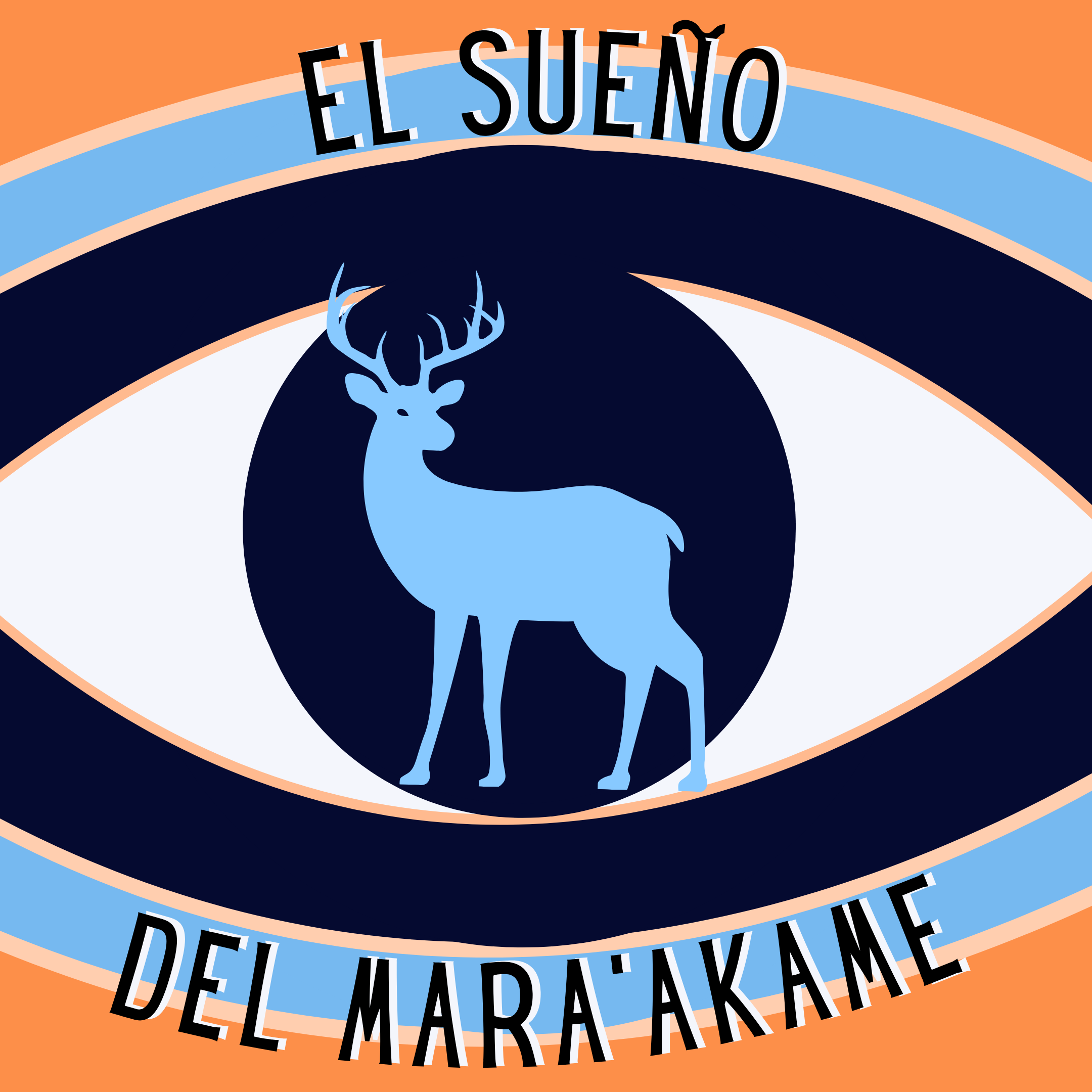Please visit response.fsu.edu for official FSU updates and resources.
El sueño de mara’akame y la representación de las tribus indígenas en la película
 A medida que las poblaciones nativas se vuelven más escasas con cada generación, se ha puesto énfasis en la protección de las culturas y estilos de vida de estos pueblos indígenas. El Sueño del Mara'akame cuenta la historia de un joven wixárika, Nieri, mientras pinta una amplia imagen del pueblo wixaritari y su cultura.
A medida que las poblaciones nativas se vuelven más escasas con cada generación, se ha puesto énfasis en la protección de las culturas y estilos de vida de estos pueblos indígenas. El Sueño del Mara'akame cuenta la historia de un joven wixárika, Nieri, mientras pinta una amplia imagen del pueblo wixaritari y su cultura.
El sueño del mara'akame se centra en Nieri, un joven cuyo padre es un mara'akame, o chamán wixárika. Nieri sueña con tocar música con su banda en la Ciudad de México, pero su padre tiene otros planes para él, esperando que Nieri asuma el papel de mara'akame una vez que llegue a la edad adulta. Nieri es rebelde y lucha por encontrar una identidad que satisfaga tanto los deseos de su padre como los suyos propios.
Como muchos adolescentes, Nieri canta con sus amigos en una banda, bebe cerveza, lee revistas inapropiadas y actúa de maneras que no se ajustan al grupo en el que nació. Vemos al final que las tradiciones ancestrales y el estilo de vida moderno de Nieri continúan en conflicto, y que navegar la relación entre estas dos culturas puede ser un desafío en el futuro, pero aún es posible. Además, es más significativo para Nieri aceptar ambas partes de sí mismo que solo una u otra.
La película plantea la pregunta si los aspectos modernos y wixárika de una persona, aunque aparentemente fuerzas opuestas, pueden reconciliarse. De alguna manera, como saben muchas personas que han crecido en un entorno cultural complejo, sí se pueden. Y podemos ver cómo todo sucede a través de los ojos de Nieri en esta historia de mayoría de edad.
Los cineastas hicieron muchas elecciones intencionales para garantizar que los wixaritari estuvieran representados adecuadamente. Por un lado, la mayor parte de la película se habla wixárika con subtítulos en español / inglés. Además, el elenco está compuesto por actores de wixaritari.
Los wixaritari son nativos del centro oeste de México en la Sierra Madre Occidental, principalmente en los estados de Jalisco, Nayarit, Zacatecas y Durango. Los wixaritari (sus colonizadores españoles les dieron el nombre “huicholes”) son conocidos por su arte único, que cuenta historias y mitos a través de colores vibrantes. Las tradiciones wixárika incluyen elementos de mitología, misticismo y rituales/tradiciones diarias. La película muestra la capacidad de los wixaritari para mantener su espiritualidad y tradiciones a pesar de las crisis que los enfrentan; como la pobreza, el narcotráfico, el capitalismo y el neoextractivismo (o la extracción de recursos que puede causar costos sociales y ambientales).
El sueño de mara'akame se encuentra en una lista de películas que se muestran en el ASLC para el Festival de Cine de Cinehassee. El tema de este año son las comunidades indígenas.
Todavía está por venir para el festival es:
Amazónico interno - ONLINE 8/10/21-15/10/21
El sueño de mara'akame - 21/10/21 - 6 p.m., EN PERSONA en el ASLC
Regístrese aqui: https://forms.gle/cCEnhjH3F9FuFqjh8 para acceder a las películas que se proyectarán en línea.
Mara’akame’s Dream and the Film’s Representation of Indigenous Populations
As native populations are becoming more and more scarce with each generation, emphasis has been placed on protecting the cultures and lifestyles of these indigenous peoples. El Sueno del Mara’akame tells the story of a young Wixárika boy, Nieri, while painting a broad picture of the Wixaritari people and their culture.
El Sueño del Mara’akame is centered around Nieri, whose father is a Mara’akame, or Wixaritari shaman. Nieri has dreams of playing music with his band in Mexico City, but his father has other plans for him, expecting Nieri to take on the role of Mara’akame once he reaches manhood. Nieri is rebellious and struggles to find an identity that satisfies both his father’s wishes and his own. Being the teenager he is, Nieri sings with his friends in a band, drinks beer, reads soft-porn magazines, and acts in other ways that do not conform with the group he was born into. We see in the end that Nieri’s ancestral traditions and modern lifestyle may continue to conflict, and that navigating the line between these two cultures may prove a challenge in the future, but it is still possible, and that Nieri accepting both parts of himself may be more powerful than simply choosing one.
The movie begs the question as to whether the modern and Wixárika aspects of a person, although seemingly opposing forces, can reconcile. In some ways, just as many people who have grown up in a complex cultural environment have experienced, they can. And we get to see it all happen through Nieri’s eyes in this coming-of-age story.
There were many intentional choices the filmmakers made to ensure the Wixaritari were represented properly. For one, the majority of the film is spoken Wixárika with Spanish/English subtitles. Not to mention the cast is composed of Wixaritari actors.
The Wixaritari are native to central western Mexico in the Sierra Madre Occidental, primarily in the states of Jalisco, Nayarit, Zacatecas and Durango. The Wixaritari (given the name Huichols by their Spanish colonizers) are known for their unique art, which tells stories and myths through vibrant colors. Wixárika traditions include elements of mythology, mysticism, and daily rituals/traditions. The movie shows the ability of the Wixaritari to maintain their spirituality and traditions in spite of the many crises they face, such as poverty, drug trafficking, capitalism and neoextractivism (or resource extraction that can cause social and environmental costs).
El Sueño de Mara’akame is in a line-up of films being shown at the Askew Student Life Center for the Cinehassee Film Festival. This year's theme is indigenous communities.
Still to come for the festival is:
Eternal Amazon - ONLINE 10/8/21-10/15/21
El Sueño de Mara’akame - 10/21/21 @ 6 p.m., IN PERSON at the ASLC
Register at https://forms.gle/cCEnhjH3F9FuFqjh8 to access films that will be screened online.
Sources
Adrián, Patricio. “Reseña: El Sueño Del Mara'akame, De Federico Cecchetti.” Maremoto Maristain, 7 June 2019, monicamaristain.com/resena-el-sueno-del-maraakame-de- federico-cecchetti/.
Brown, Julia. “El Sueño Del Mara'akame (the Mara'akame's Dream, Federico Cecchetti, Mexico, 2016) beyond the Traditional/Modern Binary.” Mediático, 15 July 2019, reframe.sussex.ac.uk/mediatico/2019/07/15/el-sueno-del-maraakame-the-maraakames-dream-federico-cecchetti-mexico-2016-beyond-the-traditional-modern-binary/.
“Who Are the Huichol.” Huichol Handcrafts, www.huicholhandcrafts.com/huichol/who-are-the-huichol.
Written by & Art by: Mia Hernandez



